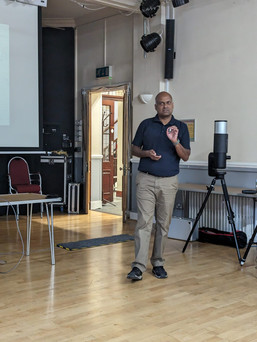From Raspberry Pi to the Night Sky: A Workshop on Electronically Assisted Astronomy - 9th May 2024
- Paul May
- May 9, 2024
- 2 min read
Updated: May 11, 2024
Astroberry and StellarMate: Exotic Fruit or Your Sister's Boyfriend? No, they are actually two alternative pieces of software that can be used with the brilliantly named Raspberry Pi to automate your observational setup.
Bobby opened the proceedings with a useful definition of Electronically Assisted Astronomy (EAA), which essentially involves using technology to send images from a telescope to a screen instead of directly to the eyepiece. There are two possibilities: integrated packages, which are dedicated systems based on specific platforms - from the 'low end' Dwarf II and SeeStar to the higher-end and more expensive Stellina and EVScope. It's noteworthy that with the declining cost curves associated with electronics, the low-end scopes, which have been more recently released, deliver quite impressive performance!

Next, we explored the non-integrated packages. The key distinction here is that any telescope can be automated, allowing one to enhance their standard observing setup. Bobby shared his Damascene moment - capturing images of a lunar eclipse at 3am in the morning at -5°C in his back garden rather than controlling the scope from the comfort and warmth of indoors. However, this is not a trivial DIY procedure - hence the workshop!
Bobby and Richard guided us through the necessary processes using a Raspberry Pi5 with the Astroberry and StellarMate astronomy suites, respectively. Other single-board computer options exist, such as ASIAir, which Mike briefly discussed in the context of his solar setup. The pros and cons of the two software options were discussed (e.g., Astroberry is free, StellarMate runs on Android), though both utilize the same underlying planetarium, control, and communication packages. The setup process was clearly presented, live demos of the software were shown, and more detailed documentation is to be sent to attendees.

This workshop thus more than surpassed its aim of lowering the barrier to non-integrated EAA entry for neophytes like myself, demonstrating that it can be done for around £200! Thank you to Bobby and Richard, and also to Mike for describing his solar setup, and to Simon for his recording, which will be made available to members.
Pictures from the Event (by Simon Hurst and Paul May):
You can watch the video of this workshop here
























Comments